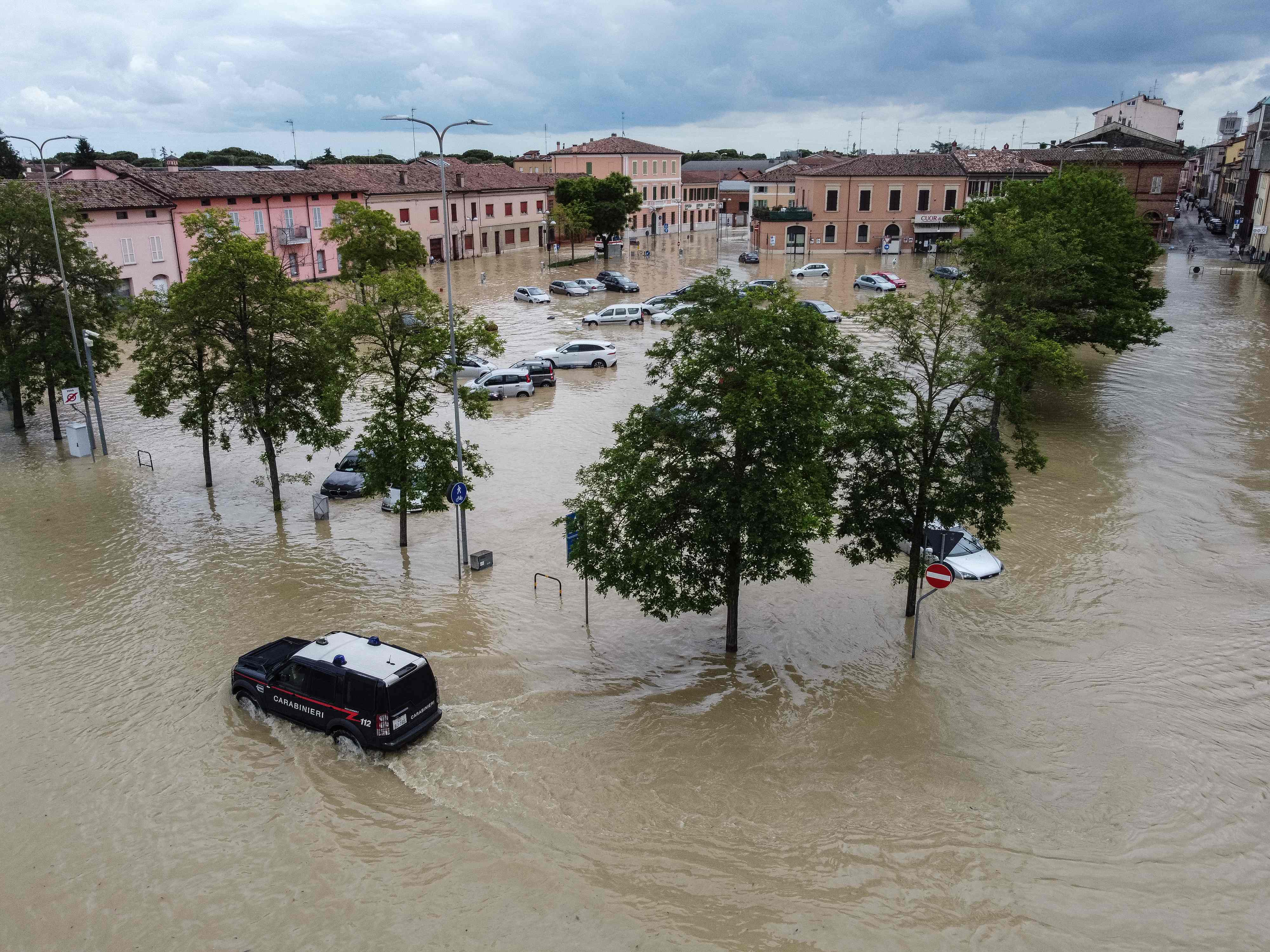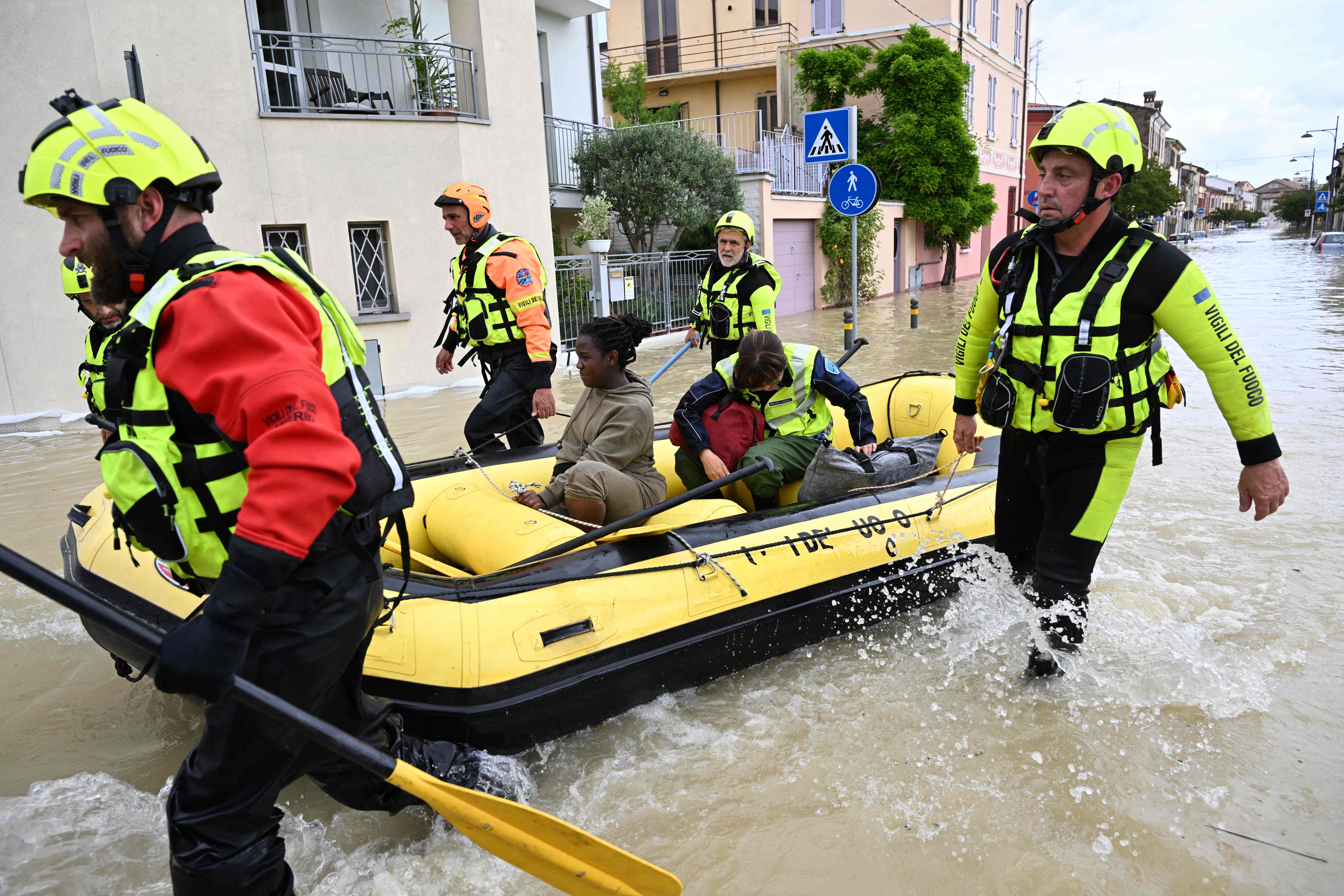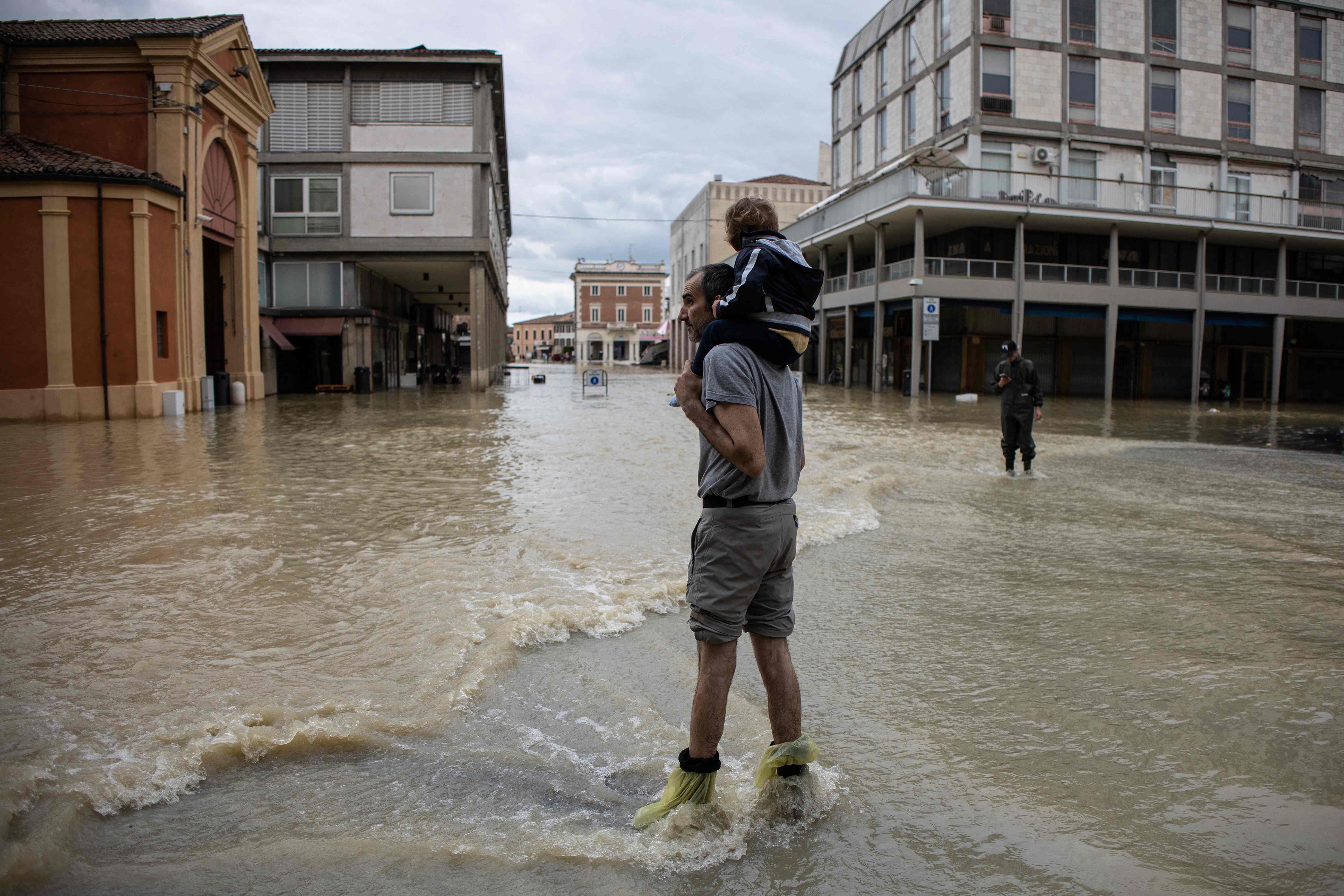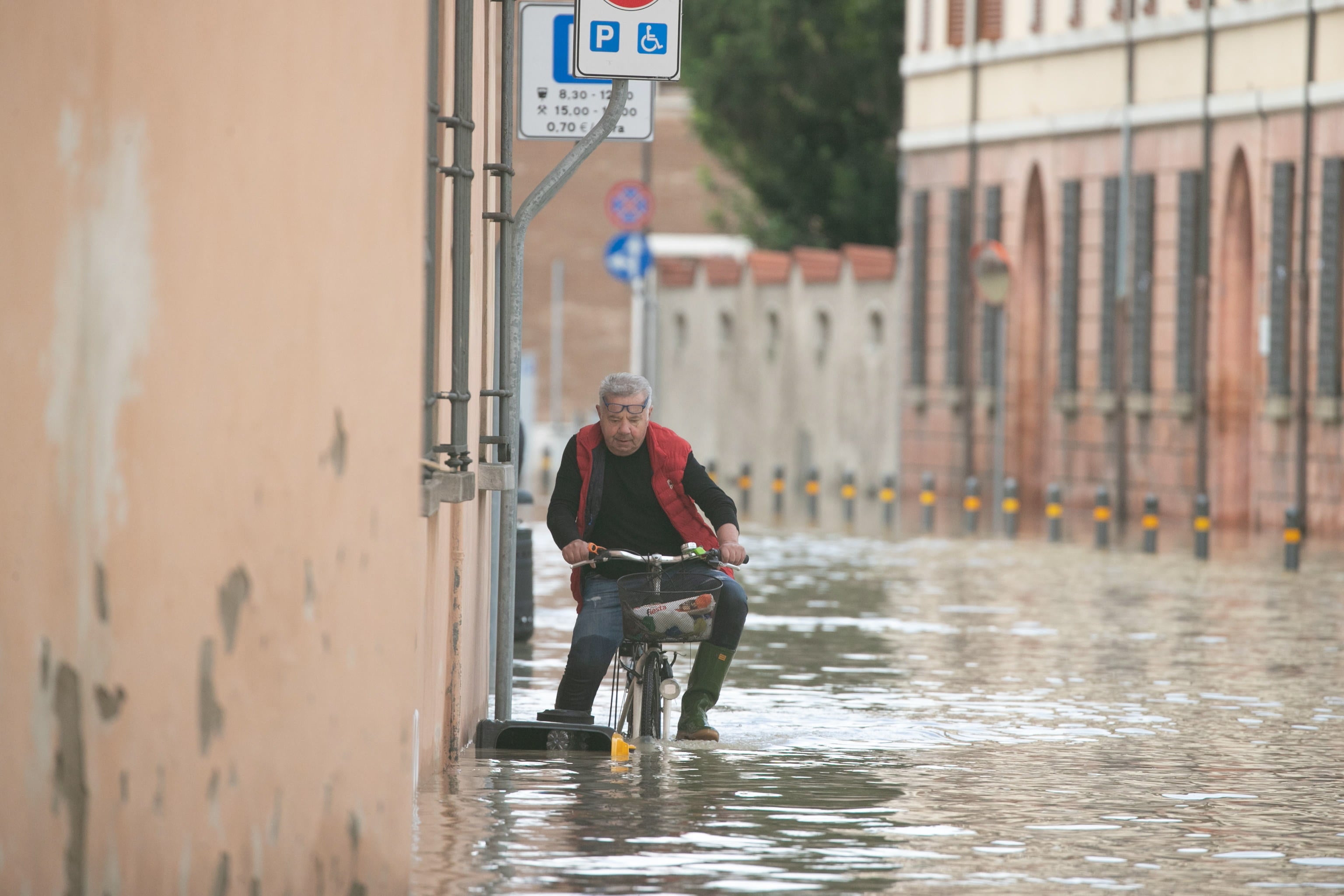Italy floods leave behind ‘incalculable’ devastation to farms and homes
Parts of the city of Faenza are still underwater, with cars submerged and basements flooded by thick, gooey mud

Floods that killed at least nine people in Italy caused billions of pounds worth of damage and hit agriculture particularly hard, a regional governor said on Thursday.
Rescue crews were still working to reach towns and villages, with many of them cut off from power and mobile phone services, in the northern region of Emilia-Romagna.
Torrential rains devastated the area, with up to 300 landslides, 23 overflowing rivers, some 400 roads damaged or destroyed, and 42 flooded municipalities.
“We are facing a new earthquake,” Emilia-Romagna president Stefano Bonaccini told reporters, recalling the 2012 quake that destroyed thousands of homes.

Farmers warned of “incalculable” losses and authorities began mapping out clean-up and reconstruction plans.
Local mayors said some remote villages are still isolated because landslides have made roads impassable and phone service remains severed.
“If it rains any more, the situation will be tragic,” said Mercato Saraceno mayor Monica Rossi.
Parts of the city of Faenza are still underwater, with cars submerged and basements flooded by thick, gooey mud.
One family standing on their balcony said they did not have electricity, gas or food. Other residents took shelter at a local gymnasium, where soldiers set up cots on the basketball court for new arrivals.
More than 10,000 people fled their homes, some plucked from rooftops or balconies by rescue helicopters and others ferried out on civil protection dinghies.
Italian farm lobby Coldiretti said more than 5,000 farms with greenhouses, nurseries and stables have been flooded, covering thousands of acres of vineyards, fruit groves, vegetables farms and grain fields.

The Superior Institute for Environmental Protection and Research has identified Emilia-Romagna as one of the most at-risk Italian regions for flooding, where both territory and populations face higher risks of “hazard scenarios” than the rest of the country.
The hardest-hit eastern part of the region, sandwiched between the Apennine mountain chain and the Adriatic Sea, was first hit by intense rain earlier in May.
In the town of Cesena, rain stopped and waters largely receded, allowing locals to regain access to their mud-wrecked homes, including couple Maurizio Cola and Raffaella Zanni who escaped early on Wednesday.
“We had to throw everything away, nothing was saved. Water arrived up to here. The bed expanded with the water,” Cola said, as Zanni wiped away tears, mourning the loss of one of her most precious belongings: her wedding album.

Sunday’s Formula One grand prix in Imola, which is close to many of the worst-hit areas, was called off to relieve pressure on emergency services, while a Bruce Springsteen concert in Ferrara was set to go ahead as planned, drawing some criticism.
Ferrara mayor Alan Fabbri defended the decision not to cancel the concert, which was expected to attract as many as 50,00 people.
“I am sorry if anyone may have thought that Ferrara was insensitive to the tragedy in Romagna just because it did not cancel the concert of The Boss,” he posted on Facebook. A concert, “given its enormous complexity, cannot be postponed or cancelled” at short notice after having involved thousands of workers and tourists arriving in the city, he said.
Associated Press and Reuters contributed to this report
Join our commenting forum
Join thought-provoking conversations, follow other Independent readers and see their replies
Comments
Bookmark popover
Removed from bookmarks